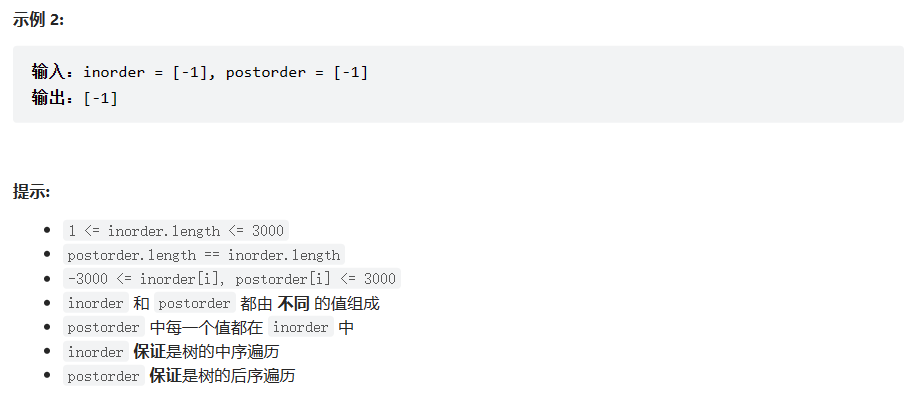Java二叉树进阶面试题讲解
- 1.二叉树的构建及遍历
- 2.二叉树的分层遍历
- 3.给定一个二叉树, 找到该树中两个指定节点的最近公共祖先
- 4.二叉树搜索树转换成排序双向链表
- 5.根据一棵树的前序遍历与中序遍历构造二叉树
- 6.根据一棵树的中序遍历与后序遍历构造二叉树
- 7.二叉树创建字符串
大家好,我是晓星航。今天为大家带来的是 Java二叉树进阶面试题讲解 的讲解!
1.二叉树的构建及遍历
二叉树的构建及遍历。OJ链接


示例图解:

import java.util.*;class TreeNode { public char val; public TreeNode left; public TreeNode right; public TreeNode(char val) { this.val = val; }}// 注意类名必须为 Main, 不要有任何 package xxx 信息public class Main { public static int i = 0; public static TreeNode createTree(String str) { TreeNode root = null; if (str.charAt(i) != '#') { root = new TreeNode(str.charAt(i)); i++; root.left = createTree(str); root.right = createTree(str); } else { //遇到# 就是空树 i++; } return root; } public static void inorder(TreeNode root) { if (root == null) { return; } inorder(root.left); System.out.print(root.val + " />); inorder(root.right); } public static void main(String[] args) { Scanner in = new Scanner(System.in); // 注意 hasNext 和 hasNextLine 的区别 while (in.hasNextLine()) { // 注意 while 处理多个 case String str = in.nextLine(); TreeNode root = createTree(str); inorder(root); } }}思路:根据题目意思:我们的#是null即为空结点的意思,因此我们再使用str.CharAt(i)来遍历我们输入的每一个字符时遇到#就直接i++,即使这一个结点的左结点置为空,如果继续遇到#就继续i++使其右节点也为空,然后返回我们的上一个结点。直到遍历完整个字符串我们的树便算是创建完毕了。

2.二叉树的分层遍历
二叉树的分层遍历 OJ链接


/** * Definition for a binary tree node. * public class TreeNode { * int val; * TreeNode left; * TreeNode right; * TreeNode() {} * TreeNode(int val) { this.val = val; } * TreeNode(int val, TreeNode left, TreeNode right) { * this.val = val; * this.left = left; * this.right = right; * } * } */class Solution { public List<List<Integer>> levelOrder(TreeNode root) { List<List<Integer>> ret = new ArrayList<>(); if (root == null) { return ret; } Queue<TreeNode> queue = new LinkedList<>(); queue.offer(root); while (!queue.isEmpty()) { int size = queue.size();//这个值代表当前行有多少个结点 List<Integer> list = new ArrayList<>(); while (size != 0) { TreeNode cur = queue.poll(); list.add(cur.val); if (cur.left != null) { queue.offer(cur.left); } if (cur.right != null) { queue.offer(cur.right); } size--; } ret.add(list); } return ret; }}思路:首先判断树是否为空,为空直接返回链表对象ret,不为空继续往下走,将root根结点添加进入queue队列,并每次拿出一个元素给cur,将cur的值添加到list中,并访问cur的左右结点继续循环直至root树为空,最后返回我们的ret即可。

3.给定一个二叉树, 找到该树中两个指定节点的最近公共祖先
给定一个二叉树, 找到该树中两个指定节点的最近公共祖先 。OJ链接



二叉搜索树:根的左边比根小,根的右边比根大 中序遍历的大小是有序的。
思路一:以二叉搜索树为例来讲解此题
1、root == p || root == q 此时的最近公共祖先是root
2、p.val < root.val || q.val < root.val p和q都在root的左子树 最近公共祖先在root的左树当中
3、p.val > root.val || q.val > root.val p和q都在root的右子树 最近公共祖先在root的右树当中
4、p.val > root.val && q.val < root.val q和p分别在root的左子树和右子树当中 最近公共祖先就是root
三种情况的图解:

/** * Definition for a binary tree node. * public class TreeNode { * int val; * TreeNode left; * TreeNode right; * TreeNode(int x) { val = x; } * } */class Solution { public TreeNode lowestCommonAncestor(TreeNode root, TreeNode p, TreeNode q) { if (root == null) { return null; } if (root == p || root == q) { return root; } TreeNode leftT = lowestCommonAncestor(root.left,p,q); TreeNode rightT = lowestCommonAncestor(root.right,p,q); if (leftT != null && rightT != null) { return root; } else if(leftT != null) { return leftT; } else if(rightT != null) { return rightT; } else { return null; } }} 
当root为3,p为6,q为4时,我们代码运行的逻辑图解:

注:每一次return是返回上一个函数的值,直到第一个递归函数return才是返回我们程序的值。

思路二:假设 这棵二叉树 是使用孩子双亲表示法 表示的
1、用两个栈 存储 路径 — 如何找到从根结点到指定结点的路径
2、求栈的大小
3、计算出两个栈中 多的元素 出差值个元素
4、开始出栈 直到栈顶元素相同 此时就是公共祖先
/** * Definition for a binary tree node. * public class TreeNode { * int val; * TreeNode left; * TreeNode right; * TreeNode(int x) { val = x; } * } */class Solution { //root:根节点 node:指定的节点 stack:存放指定节点的路径 public boolean getPath (TreeNode root,TreeNode node,Stack<TreeNode> stack) { if(root == null || node == null) { return false; } stack.push(root); if(root == node) { return true; } boolean flg = getPath(root.left,node,stack); if(flg == true) { return true; } flg = getPath(root.right,node,stack); if(flg == true) { return true; } stack.pop(); return false; } public TreeNode lowestCommonAncestor(TreeNode root, TreeNode p, TreeNode q) { if(root == null) { return null; } Stack<TreeNode> stack1 = new Stack<>(); getPath(root,p,stack1); Stack<TreeNode> stack2 = new Stack<>(); getPath(root,q,stack2); int size1 = stack1.size(); int size2 = stack2.size(); if (size1 > size2) { int size = size1 - size2; while (size != 0) { //出第一个栈里面的元素 stack1.pop(); size--; } while(!stack1.isEmpty() && !stack2.isEmpty()) { //判断地址 if (stack1.peek() == stack2.peek()) { return stack1.pop(); } else { stack1.pop(); stack2.pop(); } } } else { int size = size2 - size1; while (size != 0) { stack2.pop(); size--; } while(!stack1.isEmpty() && !stack2.isEmpty()) { //判断地址 if (stack1.peek() == stack2.peek()) { return stack1.pop(); } else { stack1.pop(); stack2.pop(); } } } return null; }} 

4.二叉树搜索树转换成排序双向链表
二叉树搜索树转换成排序双向链表 //然后开始进入右节点递归 inorder(pCur.right);//右 } public TreeNode Convert(TreeNode pRootOfTree) { if (pRootOfTree == null) { return null; } inorder(pRootOfTree); TreeNode head = pRootOfTree; //这个while的作用是找到这棵树的最下的左节点 这个左节点就是我们需要找到的节点 while (head.left != null) { head = head.left; } return head; }} 
5.根据一棵树的前序遍历与中序遍历构造二叉树
根据一棵树的前序遍历与中序遍历构造二叉树 OJ链接




思路:
1、先将pi下标的 元素 创建为root
2、在中序遍历的数组当中,找到当前pi下标的元素,存在的位置。ri
3、root.left = ri – 1;
root.right = ri + 1;
/** * Definition for a binary tree node. * public class TreeNode { * int val; * TreeNode left; * TreeNode right; * TreeNode() {} * TreeNode(int val) { this.val = val; } * TreeNode(int val, TreeNode left, TreeNode right) { * this.val = val; * this.left = left; * this.right = right; * } * } */class Solution { public int preIndex = 0; public TreeNode creatTreeByPandI(int[] preorder,int[] inorder, int inbegin, int inend) { if(inbegin > inend) { //如果满足这个条件 说明 没有左树 或者 右树了 return null; } TreeNode root = new TreeNode(preorder[preIndex]); //找到根在中序遍历的位置 int rootIndex = findIndexOfI(inorder,inbegin,inend,preorder[preIndex]); if (rootIndex == -1) { return null; } preIndex++; //分别找到左子树和右子树 root.left = creatTreeByPandI(preorder,inorder,inbegin,rootIndex - 1); root.right = creatTreeByPandI(preorder,inorder,rootIndex + 1,inend); return root; } private int findIndexOfI(int[] inorder, int inbegin, int inend,int key) { for (int i = inbegin; i <= inend; i++) { if (inorder[i] == key) { return i; } } return -1; } public TreeNode buildTree(int[] preorder, int[] inorder) { if (preorder == null || inorder == null) { return null; } return creatTreeByPandI(preorder,inorder,0,inorder.length-1); }} 
6.根据一棵树的中序遍历与后序遍历构造二叉树
根据一棵树的中序遍历与后序遍历构造二叉树OJ链接



思路:
1、先将pi下标的 元素 创建为root
2、在中序遍历的数组当中,找到当前pi下标的元素,存在的位置。ri
3、先找根,然后在找右子树,最后找左子树。
/** * Definition for a binary tree node. * public class TreeNode { * int val; * TreeNode left; * TreeNode right; * TreeNode() {} * TreeNode(int val) { this.val = val; } * TreeNode(int val, TreeNode left, TreeNode right) { * this.val = val; * this.left = left; * this.right = right; * } * } */class Solution { public int postIndex = 0; public TreeNode creatTreeByPandI(int[] inorder,int[] postorder, int inbegin, int inend) { if(inbegin > inend) { //如果满足这个条件 说明 没有左树 或者 右树了 return null; } TreeNode root = new TreeNode(postorder[postIndex]); //找到根在中序遍历的位置 int rootIndex = findIndexOfI(inorder,inbegin,inend,postorder[postIndex]); if (rootIndex == -1) { return null; } postIndex--; //分别找到右子树和左子树 root.right = creatTreeByPandI(inorder,postorder,rootIndex + 1,inend); root.left = creatTreeByPandI(inorder,postorder,inbegin,rootIndex - 1); return root; } private int findIndexOfI(int[] inorder, int inbegin, int inend,int key) { for (int i = inbegin; i <= inend; i++) { if (inorder[i] == key) { return i; } } return -1; } public TreeNode buildTree(int[] inorder, int[] postorder) { if (postorder == null || inorder == null) { return null; } postIndex = postorder.length-1; return creatTreeByPandI(inorder,postorder,0,inorder.length-1); }} 
7.二叉树创建字符串
二叉树创建字符串OJ链接


/** * Definition for a binary tree node. * public class TreeNode { * int val; * TreeNode left; * TreeNode right; * TreeNode() {} * TreeNode(int val) { this.val = val; } * TreeNode(int val, TreeNode left, TreeNode right) { * this.val = val; * this.left = left; * this.right = right; * } * } */class Solution { public void treeToString(TreeNode t,StringBuilder sb) { if (t == null) { return; } sb.append(t.val); if (t.left != null) { sb.append("("); treeToString(t.left,sb); sb.append(")"); } else { //t.left == null; if (t.right == null) { return; } else { sb.append("()"); } } if (t.right == null) { return; } else { sb.append("("); treeToString(t.right,sb); sb.append(")"); } } public String tree2str(TreeNode root) { if (root == null) { return null; } StringBuilder sb = new StringBuilder(); treeToString(root,sb); return sb.toString(); }} 
思路:例如上图,我们一直往左,每添加一个元素就加一个”(“,再往右判断如果右也为空我们就添加一个”)“,然后返回到上一个元素,如果右边有元素也是重复之前的操作,添加一个”(“然后继续往后判断,左右为空就添加一个”)“,如果左树为空右树不为空,我们就添加一个”()”。


感谢各位读者的阅读,本文章有任何错误都可以在评论区发表你们的意见,我会对文章进行改正的。如果本文章对你有帮助请动一动你们敏捷的小手点一点赞,你的每一次鼓励都是作者创作的动力哦!